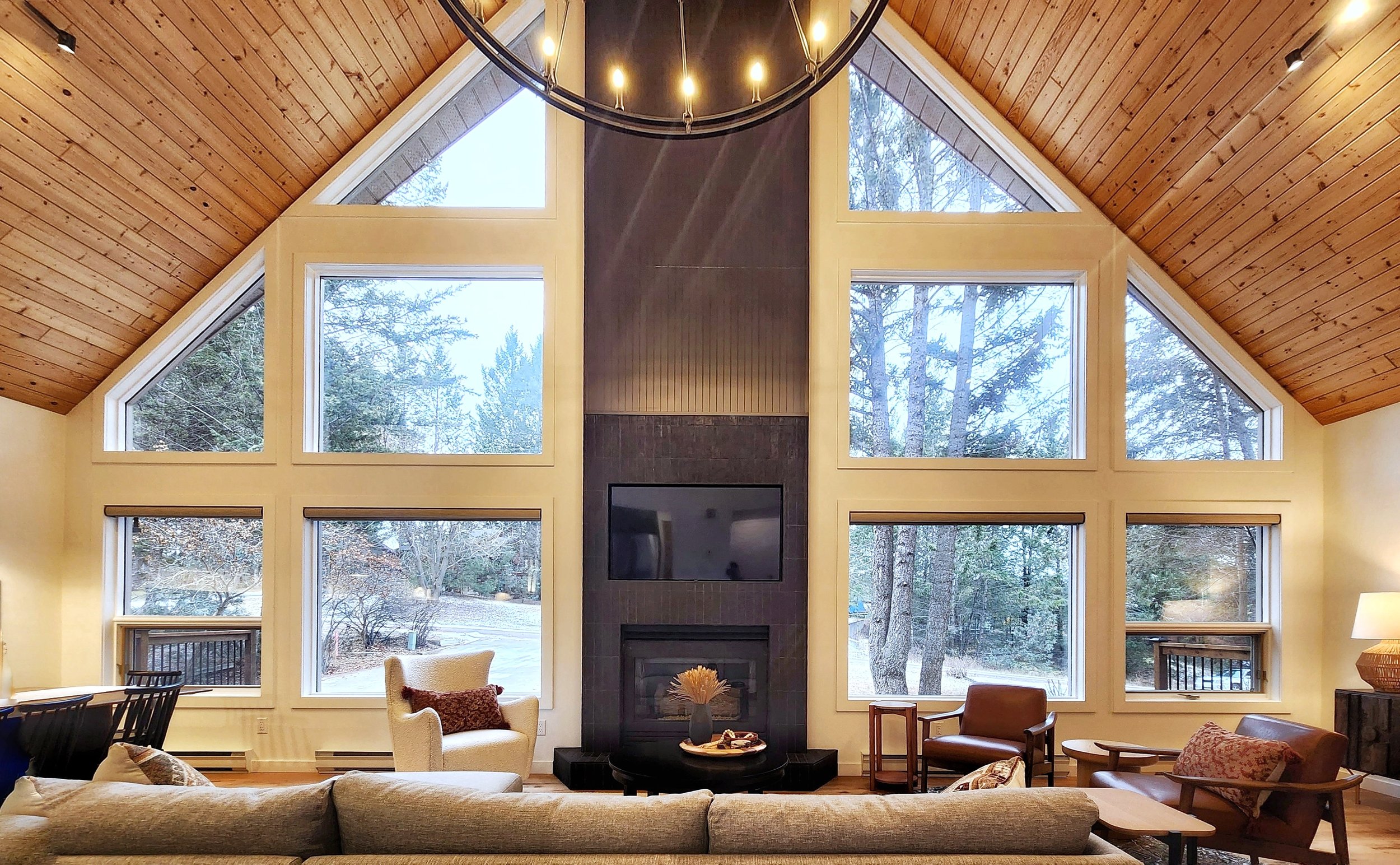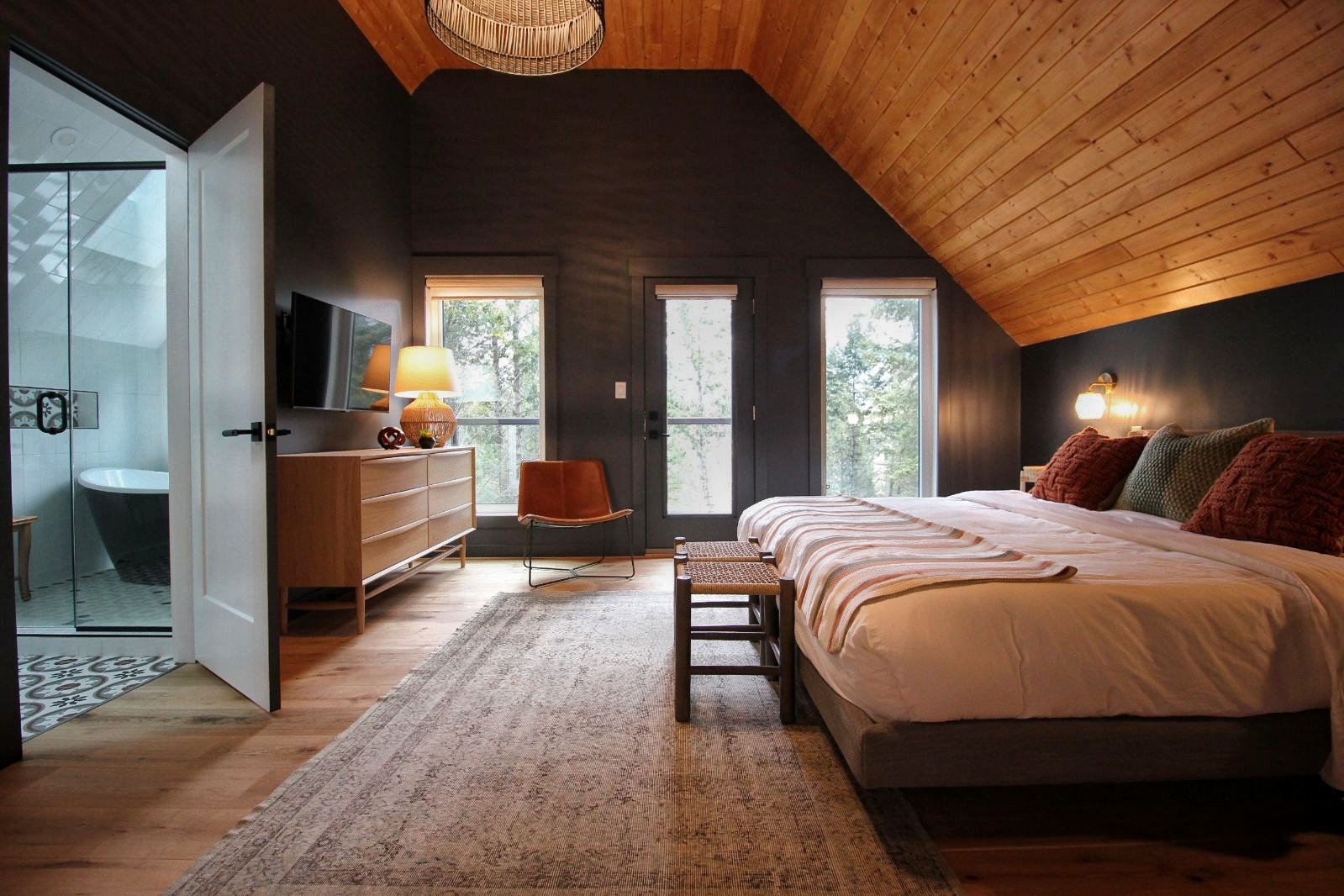BRRRRSTR Breakdown | Luxury Cabin Investment Property
Note that the information provided herein should not be considered financial advice. I am not an accountant or financial planner, and recommend seeking professional guidance specific to your personal circumstances.
Disclosure: This post may contain affiliate links, which means if you click on a link and make a purchase, I may receive a small commission at no extra cost to you.
There are an almost infinite number of real estate investment strategies, limited only by your imagination. The creativity involved is something I love about the process. You can combine strategies, use pieces from one or another, and re-use the strategies over and over, all to find what works for you specifically at a given point in time.
In my latest investment - a luxury vacation rental in Invermere BC, I was able to combine multiple strategies in the deal. I decided to optimize for cash flow, as I was looking for some balance in my portfolio and to help me shift my reliance on my 9-5 employment income. To do this, I combined the capital efficiency of a BRRRR (Buy, Rehab, Rent, Refinance, Repeat) strategy with the strength of cash flow of short-term rentals.
Today I will break down the strategy that I used on my latest vacation rental property, which now generates $75,000 in annual positive cash flow. You read that right. Let’s dive in!
Portfolio Architecture Strategy: Cash Flow vs. Equity Building
I’ve found that real estate investments often fall within one of two categories - equity building or cash flow (and maybe tax benefits as a third). Portfolio architecture is the way that you decide to prioritize and implement the available strategies within your properties. Buy and hold investments, investing in areas with strong economic growth potential, and many commercial and business endeavors fall in to the equity building category.
Fix and flips, short-term rentals and multi-family properties are all good examples of cash-flow real estate investments. These sorts of investments often require a greater degree of management and oversight to generate positive cash flow.
I focused on cash flow on this project as my long-term rentals in Calgary already primarily serve as equity-building investments. This will provide some balance to my portfolio, and importantly, will assist in moving me closer to replacing my regular 9 to 5 income with real estate investing revenue. With that in mind, I decided to optimize for cash flow and locate a short-term rental property in a vacation destination market.
The “BRRRRSTR” Strategy
Most people have heard of the BRRRR (Buy, Rehab, Rent, Refinance, Repeat) strategy, as it is one of the best ways to recycle your money into future deals. The BRRRR is proven, works incredibly well, and is a strategy I’ve used successfully several times in the past. However, if you rent the unit as a short-term rental (STR), you can supercharge your return on investment - this is known as the “BRRRRSTR”. The BRRRRSTR strategy combines the principles of BRRRR investing with Short-Term Rentals (STRs) to optimize returns on real estate investments.
To execute a successful BRRRRSTR, it is critical to do your diligence on both sides of the strategy. The BRRRR strategy requires you to get a good deal, understand your construction costs, and understand the comparables that will establish your after-repair value (ARV). STR investing requires that you understand your market fundamentals, revenue expectations based on market data, and have a greater threshold for the variability of booking revenue. However, if you enter with a strong understanding of this strategy, the results can be more than worthwhile.
BRRRRSTR Advantages
Although the potential for cash flow is significant with a BRRRRSTR, it comes with several downsides to take into account:
Cash-Flow typically outperforms long-term rentals. Although there is an increased risk that you will not be booked, short-term rentals will usually generate more monthly revenue. Of course, run your numbers to be sure!
Combining multiple investment strategies can give you the best of both worlds. You can recapture equity with a refinance while earning extra cash flow.
Short-term rentals can allow you to transition to an active investment role. For people like me who ultimately wish to leave their 9-5 behind, taking an active role in my investments is highly desirable!
Downsides of the BRRRRSTR Investing Strategy
Although the potential for cash flow is significant with a BRRRRSTR, it comes with several downsides to take into account:
BRRRRSTR investing is more capital-intensive than traditional BRRRRs. Furnishing a property requires additional capital over and above what you would need for a traditional renovation and rent BRRRR. In this 2800sqft / 5BR / 3bath home, we invested approximately $75,000 in furnishings alone.
Running a short-term rental is much more work than managing a long-term rental (assuming you self-manage). You will have to create systems to replenish stock of soaps, detergents, cleaning supplies, toilet paper, and linens. You will also need to create processes to engage your cleaning team, landscapers, hot tub technicians, and contractors for repairs - which are likely to occur more often than a long-term rental. All that, plus you will be responsible for messages to your guests - which, if you have an average of 5 groups a month, that is 5 different sets of people with questions, support, and concerns.
STRs carry significant regulatory risk. There’s no way around this one, short-term rentals are a media magnet and the current scapegoat for the housing crisis. Governments around the world are doing what they can to introduce new restrictive legislation. It is critical to enter this type of investment with an awareness of the regulatory landscape and an understanding of the associated risks.
The Deal
Now that we had our BRRRRSTR strategy in mind, we located a cabin in Invermere BC that was perfect. Invermere is a vacation destination with strong tourism in both summer and winter, and the numbers showed that there was substantial opportunity in units that would sleep 10+. Also, there was gap of updated and renovated units. We found a 2800sqft cabin built in the 90’s that had been rented out on Airbnb for several years - it was TIRED as a result. Perfect for us, but almost everything in the property required attention.
Here’s a breakdown of the project scope that we landed on:
New plumbing throughout (replaced brittle CPVC plumbing)
Extensive electrical, new lighting and fixtures throughout
An addition to the foyer space for additional square feet
New kitchen, custom cabinets, quartz countertops, appliances
New custom baths (3x)
Basement gutted and redeveloped with 2 new bedrooms and full bath
New roof and skylight
New engineered hardwood upstairs, LVP down
New interior and exterior doors
Relocation of doors & windows to optimize the floor plan
New egress windows for the basement
Custom built-in bunk room
Secondary laundry added
Extensive custom tile work
Custom millwork including banquets and fireplace feature
Paint exterior & interior
New exterior rear decks (3x), spiral staircase and hot tub
Here are some in-progress shots of the 9 month rehab:
Profit / Loss Breakdown
Our goal was to create a product that maximized cash flow. With that objective in mind there was no expectation of a “perfect” BRRRR. However, we did hope to retain (most of) the equity that we had invested. Here’s the BRRRR half of the equation:
Purchase price: $787,000
Closing costs: $15,800
Carrying costs: $55,200
Renovation costs: $426,500
Total costs: $1,284,500
That is a biggie! Certainly the largest single-family home reno we’ve done to date. We knew it would be worth it, and I was satisfied with the appraisal of $1,269,000. Although the ARV is slightly negative relative to total costs, I was confident that the cash flow would more than make up for it.
Just how much revenue potential does the property have?
Coming from long-term rentals, the cash flow numbers continue to amaze me. This is a projected estimate, however we are well on track to hit these numbers:
Annual gross revenue (est.): $175,000
Operating costs: $100,000
$75,000 !!
This figure makes the net equity loss seem so insignificant and I am still blown away! This is life-changing income and has already made a significant impact for me. For the nerds like me looking for the cash-on-cash return, here you are:
CoC = Cash Flow (÷) Total Cash Invested
Cash Flow = $75,000
(÷)
Total Cash Invested = $434,500
($1,284,500 costs - $925,000 new mortgage + $75,000 furnishing)
=
17.2% CoC Return
I’ll take 17% all day long! And in reality, we are likely to reduce costs significantly in year 2 with improved mortgage terms, and, fully expect to be able to grow our revenue over time. That makes this an incredible investment that will only get better over as the years go on!
Implement a strategy that aligns with your goals
This project highlights the importance of being clear on your goals and objectives upfront. In real estate investing, you can be creative and select from several strategies that work best for your personal goals - whether you are looking to get away from relying on your 9-5 income, or want to create a retirement nest egg of equity. In my latest project, I was able to combine both the BRRRR and STR investment strategies to create an incredible cash-flowing asset that will pay dividends for years to come. This investment will significantly supplement my 9 to 5 employment income while allowing me to focus more of my attention on my real estate business. And even though it was not an equity-building investment by design, the initial BRRRR strategy allowed me to maximize the use of my capital and complete a significant renovation now worth over $1.2 million. So worth it!
I am curious, what strategy are you focused on now? Has it changed over time? Let me know in the comments!
















